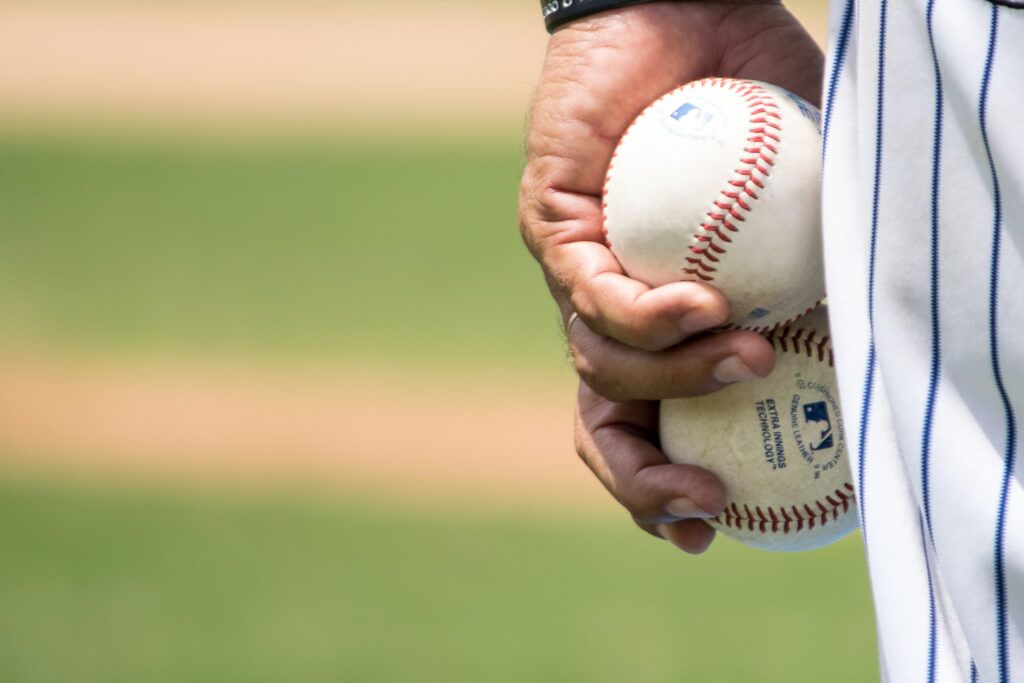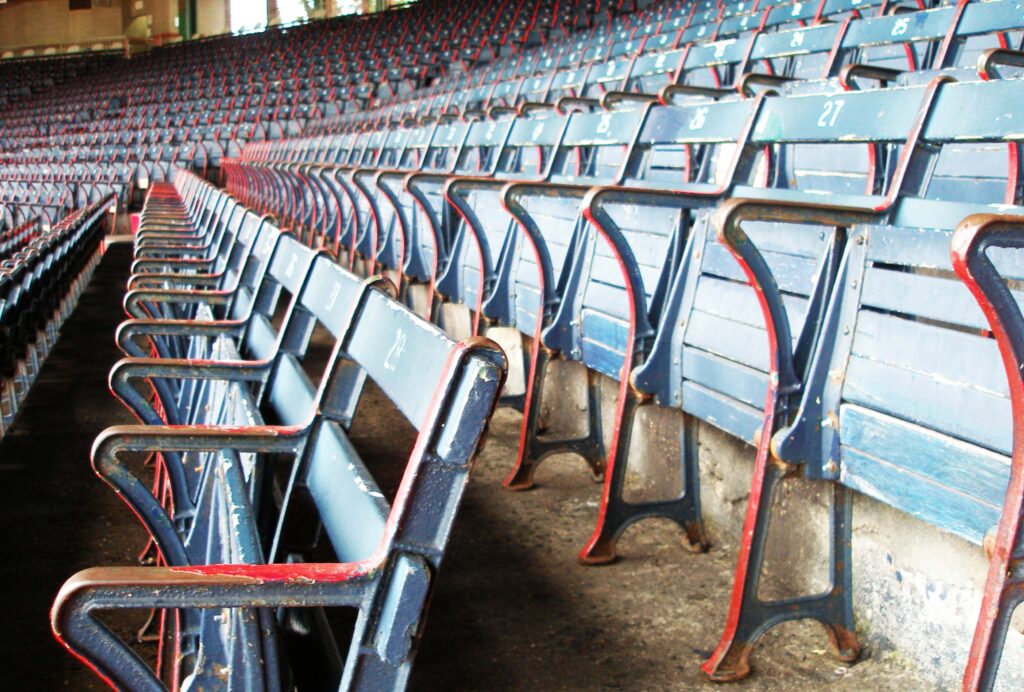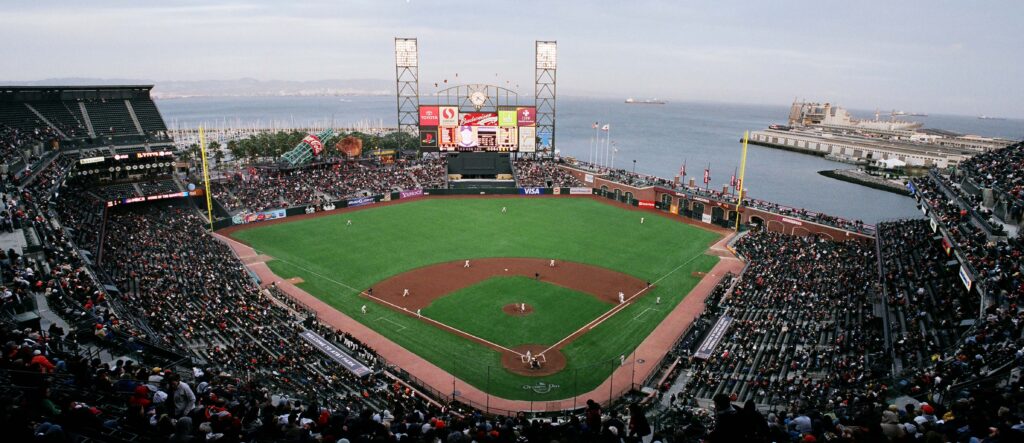
Fenway Park in Boston and Wrigley Field in Chicago are just two of the oldest and most iconic ballparks in the United States. With rich histories and passionate fan bases, attending a game at any of the handful of historical ballparks can be a memorable experience for any baseball fan.
However, attending a game at these historic stadiums can also be expensive.
This list will explore some history and tricks for saving money while attending a game these iconic fields, so you can fully enjoy the game without hitting your budget out of the park.
Here are some of America’s top and most famous ballparks, along with some tips for watching games live on a budget:
Wrigley Field, Chicago:
Wrigley Field was built in 1914 and played host to Major League Baseball for the 100th season in 2014 — and to the Cubs for the 98th year. Located in the north side community area of Lakeview, Wrigley Field sits on an the irregular block bounded by Clark (west) and Addison (south) Streets and Waveland (north) and Sheffield (east) Avenues.
Wrigley Field, nicknamed The Friendly Confines by Mr. Cub, Hall of Famer, it has a capacity of 41,009, making Wrigley Field the 10th-smallest actively used ballpark. It is the oldest National League ballpark and the second-oldest active major league of ballparks (after Fenway Park on April 20, 1912), and the only remaining Federal League ballpark. One of the things you won’t see anywhere else is its ivy-covered brick outfield wall.
Wrigley is now the only professional ballpark with an ivy-covered outfield. Other iconic details that make this ballpark unique are the unusual wind patterns off Lake Michigan, the iconic red marquee that welcomes visitors through the main entrance, and the hand-turned scoreboard. Standing true to its “old-school.” It was also the last major league park to have lights installed for play after dark.
Step outside the ballpark to what’s known as Wrigleyville— bars that turn boisterous during game days, restaurants, and shopping, with basically anything baseball lovers’ paradise needs.
Tip: Need help scoring tickets for a game? Check out Rooftop Partners for seating outside the park, across the street from Wrigley Field. It’s an inventive way locals, who became frustrated with the lack of a ballparks seats, came up with to see their beloved Cubs play. They placed bleachers on top of buildings so they could experience games from their rooftops. It’s now become a mainstream business, and visitors can enjoy the experience and game-watching from rooftops.
Fenway Park, Massachusetts:
Fenway Park, Boston’s iconic home to the Red Sox Major League Baseball team since 1912, is located at 4 Yawkey Way near Kenmore Square. It is one if not the oldest ballparks in MLB, and one of the smallest parks for attendance, seating just over 37,000 spectators.
Due to its age and Boston’s dense Fenway–Kenmore neighborhood, the park’s many renovations over the years created interesting features such as The Triangle Pesky Pole and, most famously, the Green Monster in left field, The Triangle is a region of center field where the walls form a triangle whose far corner is 420 feet from home plate.

Pesky Pole is the name for the pole on the right field foul line, which stands 302 feet from home plate, the shortest outfield distance (left or right field) in Major League Baseball.
The Green Monster is the nickname of the 37.167 feet left field wall in the park. It is located 310 to 315 feet from home plate; this short distance often benefits right-handed hitters.
Besides baseball games, it has been the site of many other sporting and cultural events, including professional football games for the Boston Redskins and the Boston Patriots, concerts, soccer and hockey games, and political campaigns.
April 20, 2012, marked Fenway Park’s centennial. On March 7, 2012, the park was added to the National Register of Historic Places.
Tip: Get to Fenway early before the masses enter the baseball park to view the lone red seat in the right field bleachers (Section 42, Row 37, Seat 21). This particular seat signifies the longest home run ever hit at Fenway. The home run, hit by Ted Williams, on June 9, 1946, was officially measured at 502 feet– well beyond “Williamsburg,” and according to Hit Tracker Online, if the ball had beenunobstructed, it would have flown 520 to 535 feet.
Oracle Park, San Francisco:
After forty years, the Giants bade farewell to Candlestick Park and, as long advocated, moved into a privately financed downtown stadium Oracle Park, initially Pacific or Pac, Bell Park, and later renamed SBC Park on that part of the shoreline of China Basin, known to Giants fans as McCovey Cove, at the corner of 3rd and King Streets (with an official address of 24 Willie Mays Plaza in honor of the longtime Giants superstar), ushering in a new era for the Giants and their fans and became one of the ultimate modernized baseball parks on the west coast.
Home to the San Francisco Giants, it’s the centerpiece of San Francisco South Beach and Mission Bay neighborhoods, and of any ballparks, this one boasts stunning views of the bay and the city skyline.
Oracle Park is a 43,000-seat state-of-the-art stadium that boasts one of the highest season attendances in Major League Baseball, and contains 68 luxury suites, 5,200 club seats on the club level and an additional 1,500 club seats at the field level behind home plate.
Out of all of the ballparks, this one has a reputation of being a pitcher’s park and the most pitcher-friendly of ballparks in the National League due to the depth of the outfield limiting home runs, according to ESPN.
On the upper deck along the left field line are the retired numbers of some of the greatest ball players to have ever played the game—Willie Mays, Jackie Robinson, Willie McCovey, Bill Terry, Carl Hubbell, Mel Ott, Orlando Cepeda, Juan Marichal, Monte Irvin, and Gaylord Perry.
Since the Giants began as a New York team, before moving to California, the retired uniforms of Christy Mathewson and John McGraw, who played or managed in the pre-number era, also hangs there.

These retired two-number era uniforms are among only six such retired uniforms in all of the Major Leagues.
Tip: Book a behind-the-scenes-tour where the Giants play, and get to go places only the players and staff go, such as the Field Warning Track, a Major League dugout, visitors indoor batting cage, the Visitor Clubhouse, the Press Box, and see a Luxury Suite. Private and public tours are available by booking ahead and checking the Giants website.
Camden Yards, Maryland:
Camden Yards, is the Major League Baseball ballpark in downtown Baltimore, Maryland, and it is home to the Baltimore Orioles.
The design of Camden Parks played an essential pivot in how new baseball parks were conceived and built. Most ballparks, before Camden Parks, were designed with multi-purpose in mind, in which baseball and football teams shared the same stadium. Although cost-cutting, each sport’s fields’ different sizes and shapes made this idea archaic.
Other ballparks ideals not seen before Camden Yards included drawings submitted by the public. A winning idea made the bullpen area a unique two-tiered design, a first in major league parks. A designated picnic area was also developed and located above and behind the bullpens. Rows of picnic tables covered by orange umbrellas are available for fans to sit and eat.
This is one of those historical ballparks, and also the first major league park to have an outfield wall made up entirely of straight wall segments since Ebbets Field. It contains 4,631 club seats and 72 luxury suites. Every seat in the ballpark is green, that is, except for two—one in left field, which marks the spot of Cal Ripken’s 278th career home run, breaking Ernie Banks; all-time record among shortstops, and one in right field, and marks the location of Eddie Murray’s 500th career home run.
On August 19, 2008, Camden Yards hosted its 50 millionth fan, a milestone reached in just seventeen seasons, the fastest park in baseball history to achieve such a figure.
Tip: Both the Babe Ruth Birthplace Museum and Sports Legends Museum at Camden Yards is located just a short walk from Baltimore’s Inner Harbor. Babe Ruth Birthplace Museum features exhibits: “Babe Batted Here,” “Babe: Husband, Father, Friend,” “Playing the Babe,” “The Star Spangled Banner in Sports”, “500 HR Club,” and more. The Sports Legends Museum exhibits the Baltimore Orioles, Colts, Ravens, and Blast; Orioles Hall of Fame; the Maryland State Athletic Hall of Fame; and regional college athletics.
Before you go:
Several online platforms and apps allow people to rent out their apartment balconies or rooftops for events, including baseball games. Here are a few options to consider:
- Rooftop Cinema Club: This platform offers outdoor movie screenings on rooftops and other unique locations, including some that show baseball games. Prices vary depending on the location and event.
- Gamedayr: This app connects sports fans with hosts willing to rent their balconies or other spaces for game viewing parties. Users can search for available listings by city and date.
- Spacer: This platform allows people to rent out their extra space, including balconies and rooftops, for various purposes, including watching sports games. Users can search for listings by location and type of space.
- Splacer: Similar to Spacer, Splacer allows users to rent out unique spaces for events, including rooftop spaces with views of stadiums or other sports venues.
Other tips for watching baseball games on a budget include:
- Bringing your own food and drinks to the game, as stadium concessions can be expensive.
- Parking farther away from the stadium and walking, taking public transportation or carpooling to save on parking fees.
- Checking out minor league baseball games in your area, which tend to be less expensive and offer a more intimate fan experience.
- To save money, consider buying tickets on resale websites where you can find cheaper tickets from season ticket holders.
- Check to see if you can show up game day and purchase tickets after a game starts.
Field notes: It’s important to note that renting out someone else’s private space for a public event like a baseball game may have specific legal and liability issues. It’s important to carefully read and follow the terms and conditions of any platform or app you use and to communicate clearly with your host to ensure a safe and enjoyable experience for everyone involved.
Did you know?
The famous baseball player Babe Ruth originally started his career as a pitcher for the Boston Red Sox before he became a legendary hitter for the New York Yankees.
Baseball is believed to have originated in the United States in the mid-19th century, evolving from older bat-and-ball games like rounders and cricket. The first recorded baseball game was played in 1846, and the first official rules were established in 1845 by the New York Knickerbocker Baseball Club.
In the decades that followed, baseball grew in popularity and so did ballparks as the game spread across the country. Professional teams began to form, and in 1903, the first modern World Series was played between the Boston Americans (now the Red Sox) and the Pittsburgh Pirates.
Baseball has since become known as “America’s pastime,” with millions of fans following their favorite teams and players each year. The game has also produced many legendary figures, such as Babe Ruth, Jackie Robinson, and Willie Mays, who have left an indelible mark on the sport’s history.
If you build it, they will come:
There is no single formula for how ballparks are made, as the design and construction of each park can vary based on a wide range of factors.
However, some general considerations are typically considered when designing ballparks.
One of the most important factors is the size and shape of the playing field. Ballparks are typically laid out in a diamond shape, with a distance of 90 feet between each base and a pitcher’s mound 60 feet 6 inches from home plate. The size and shape of the outfield can also vary depending on the location and design of baseball parks.
Another essential consideration is seating capacity. Baseball parks can range from small, intimate venues to massive stadiums holding tens of thousands of fans. The ballpark’s size may be determined by factors such as the expected attendance, the available land, and the budget for construction.
Other factors that may influence the design of ballparks include the climate of the area, the prevailing winds, and the surrounding landscape. For example, a park located in a windy area may be designed with a lower outfield fence to prevent wind from carrying fly balls out of the park.
The design of ballparks is a complex process involving various factors and considerations. Each of the ballparks is unique, and its design will depend on the team, fans, and the community’s specific needs and preferences.


